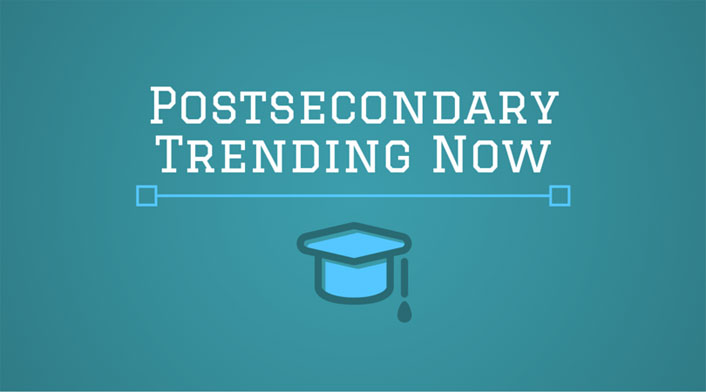
The topic of student success continues to appear in headlines throughout the media, and not only within higher education-focused- outlets. I would venture to say that most institutions have developed some official statement that articulates their commitment and focus on this front.
Of course, the work of supporting and addressing students completing what they start ends up having very different flavors throughout even similar institutions. The one thing that's certain is that focusing on student success outcomes will undoubtedly force the intersection of nearly every area of the institution, effectively eliminating longstanding institutional silos through data sharing, cross-departmental communication, system-level processes, and in many cases, a more collaborative approach to budget management.
Higher Ed's Crystal Ball: Predictive Analytics
Predicting a consumer's next purchase based on past buying patterns or others who have purchased similar items has become a given today. Deciding what to watch using services like Netflix has been made infinitely easier based on our own movie ratings or previously viewed programs. I am not sure if all of these predictions at one time annoyed me or not; like many of us, I just got used to it and really do not even notice them anymore. I take them for granted.
The use of predictive models in higher education is also in full swing, or at least it is rapidly growing. Diving deeper into lots of data collected from multiple systems is helping inform institutions on how to support their student success strategies. The shift toward predicting performance is growing, and we are starting to hear about more cases where 'big data' is employed to guide and help inform how and where to focus efforts and resources.
By leveraging predictive analytics, higher ed leaders hope to further their work in retaining and supporting their students. The most common use of predictive analytics is in the area of academic success, which typically involves using course enrollment patterns and grades, as well as other demographic information to predict a student's risk score. As a result, institutions are able to focus efforts in a much better informed manner.
Big Data's Applications Across the Student Continuum
This emerging power of using 'big data' to address and support student success is proliferating rapidly to include areas outside of the academic aspect of a student's journey. An article from EdSurge caught my attention last month, as it described how Georgia State University is using predictive analytics to address financial need, trying to tackle students' possible financial difficulty earlier in an attempt to mitigate situations from becoming worse.
In a recent article from New America, Predictive Analytics in Higher Education, authors Manuela Ekowo and Iris Palmer outline questions that administrators should consider as they deploy these new tools on campus, keeping a watchful eye on ethics. The following five guiding practices are explored in this report in much more detail:
Practice 1: Have a Vision and Plan
Practice 2: Build a Supportive Infrastructure
Practice 3: Work to Ensure Proper Use of Data
Practice 4: Design Predictive Models that Avoid Bias
Practice 5: Meet Institutional Goals and Improve Student Outcomes by Intervening with Care
Because this is such a "new paradigm" for higher ed, we must understand that there is no magic formula or clear recommendation; rather, there is a distinct need to be cautious, and an awareness that ongoing evaluation of the reasoning, processes and outcomes of your current practices will be critical. There are many points to be considered and explored as you embark on the journey to use predictive analytics in support of student success; the recent IPASS -Predicitive Analytics Checklist might be a good resource for you to get started.
I personally feel a lot of excitement in witnessing the new wave of transformation happening through better informed decision-making and proactive interventions. How we both transform and inform what we do in support of students—taking into account a more holistic approach that continues to help break through silos of information and students' experience—represents a much more promising future.
Ana Borray is the director of iPASS implementation services at EDUCAUSE. Follow her on Twitter @ABorray.
